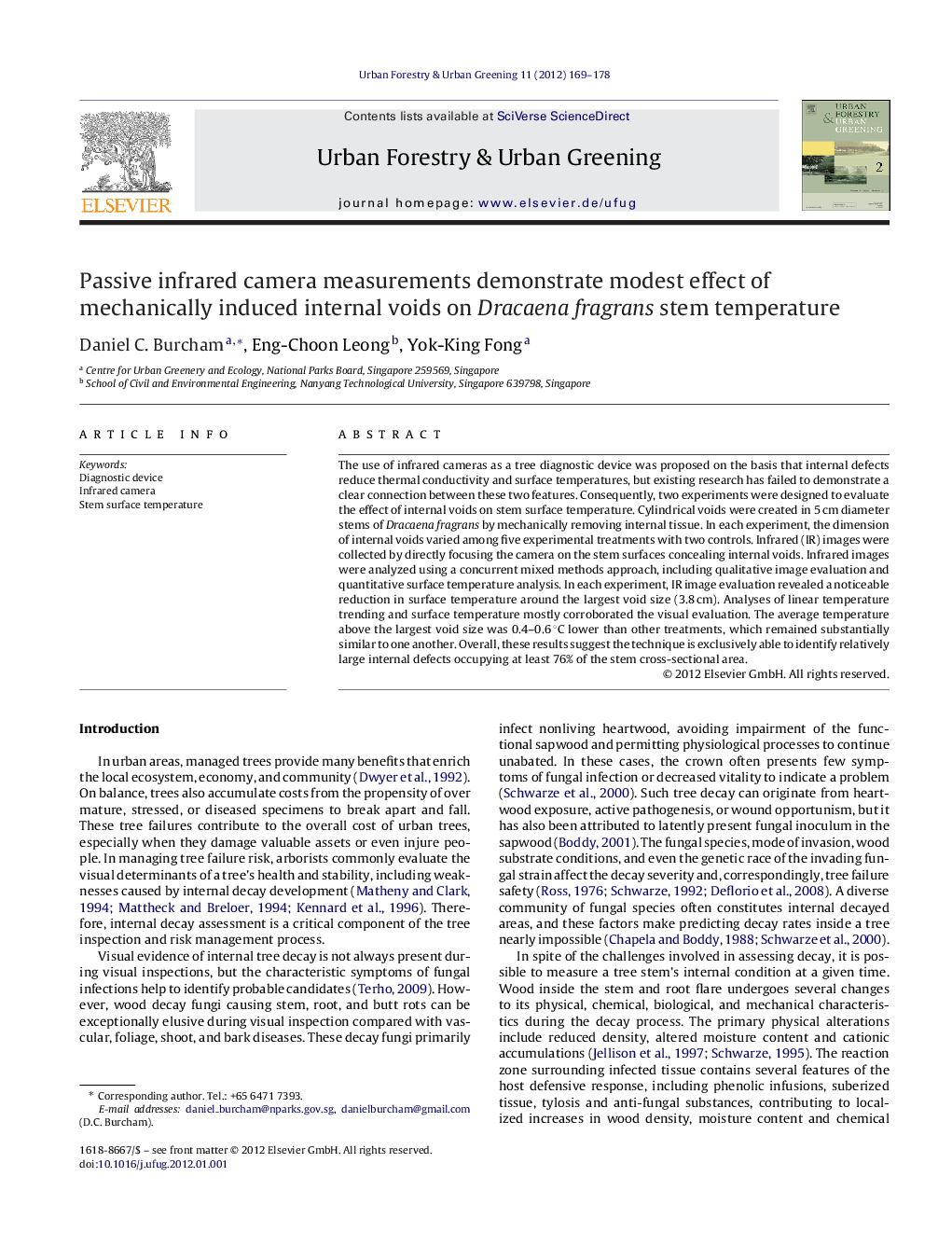| Article ID | Journal | Published Year | Pages | File Type |
|---|---|---|---|---|
| 94256 | Urban Forestry & Urban Greening | 2012 | 10 Pages |
The use of infrared cameras as a tree diagnostic device was proposed on the basis that internal defects reduce thermal conductivity and surface temperatures, but existing research has failed to demonstrate a clear connection between these two features. Consequently, two experiments were designed to evaluate the effect of internal voids on stem surface temperature. Cylindrical voids were created in 5 cm diameter stems of Dracaena fragrans by mechanically removing internal tissue. In each experiment, the dimension of internal voids varied among five experimental treatments with two controls. Infrared (IR) images were collected by directly focusing the camera on the stem surfaces concealing internal voids. Infrared images were analyzed using a concurrent mixed methods approach, including qualitative image evaluation and quantitative surface temperature analysis. In each experiment, IR image evaluation revealed a noticeable reduction in surface temperature around the largest void size (3.8 cm). Analyses of linear temperature trending and surface temperature mostly corroborated the visual evaluation. The average temperature above the largest void size was 0.4–0.6 °C lower than other treatments, which remained substantially similar to one another. Overall, these results suggest the technique is exclusively able to identify relatively large internal defects occupying at least 76% of the stem cross-sectional area.
